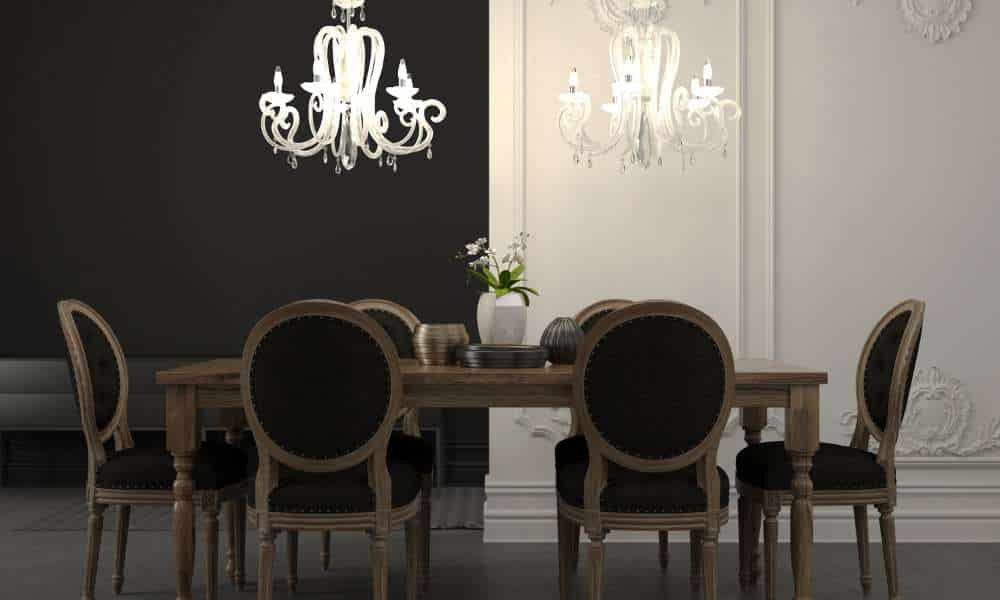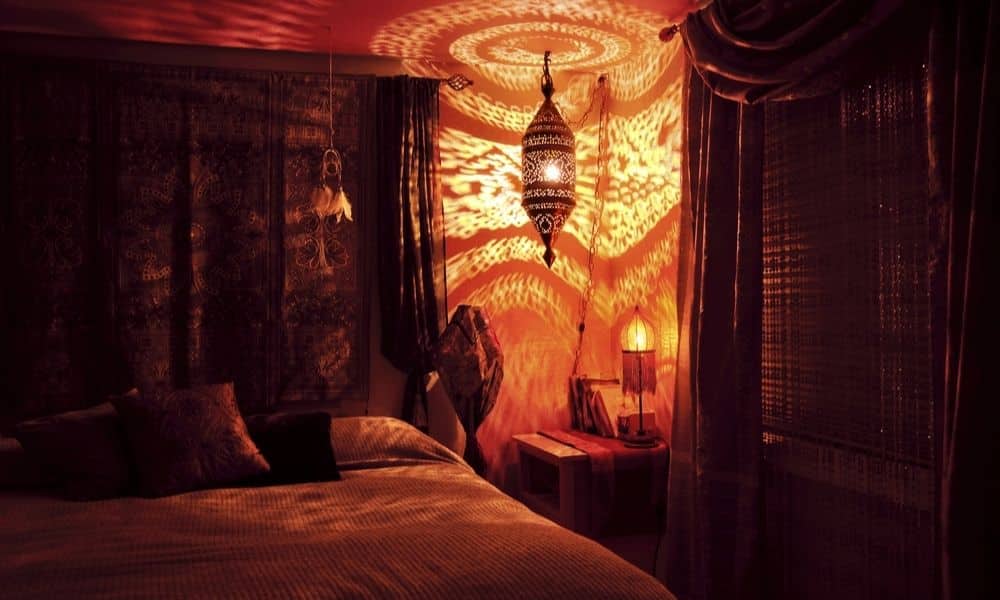When setting the stage for memorable dining experiences, the placement of your chandelier is not just a detail—it’s a defining element of your dining room’s ambiance. Hanging a chandelier at the right height is crucial for both aesthetic appeal and functional lighting. It enhances the room’s decor and ensures that dinner parties bask in flattering light, making every meal feel special. This guide will walk you through the essential considerations for determining the optimal height for hang your chandelier over the dining table, ensuring it complements the space perfectly. Whether you’re aiming for a dramatic focal point or a subtle enhancement, getting the height right is the key to achieving balance and beauty in your dining area.
1. Understanding Room Dimensions
Understanding the dimensions of your room is the first step toward selecting the perfect chandelier height and size. Most homes feature a standard ceiling height of about 8 to 9 feet, which serves as a baseline for choosing your lighting fixtures. The size of the room also plays a critical role; a larger space might require a larger or more ornate chandelier to make an adequate visual impact, whereas a smaller room could be overwhelmed by too large a fixture. Adjusting the height and scale of the chandelier to these dimensions ensures it will not only look proportionate but also enhance the overall feel of the room without dominating the space.
2. Standard Height Recommendations
A key guideline to follow when hanging a chandelier over a dining table is to maintain a distance of about 30-36 inches from the table surface to the bottom of the light fixture. This standard height ensures that the chandelier illuminates the table effectively without obstructing the view or overwhelming those seated around it. However, if your ceiling is higher than the usual 8-9 feet, consider adjusting the chandelier slightly higher to maintain visual balance in the room. Conversely, for lower ceilings, you might need to hang the pendant light a bit lower to keep the room’s proportions harmonious. These adjustments ensure that your chandelier fits perfectly within the space, providing both function and elegance.
3. Chandelier Size and Scale
Selecting the right chandelier size for your dining table dimensions is essential for creating a balanced look. A good rule of thumb is to ensure that your chandelier’s diameter is about half to two-thirds the width of the table. This proportion helps achieve a sense of harmony between the table and the light fixture above it. Additionally, it’s important to consider the overall scale of the room when choosing your pendant light. A larger room may require a bigger or taller chandelier to fill the space adequately without looking out of place. Conversely, a smaller room benefits from a more modestly sized pendant light to avoid overwhelming the space. Balancing the chandelier’s width and height with the dimensions of both the table and the room ensures a cohesive and appealing aesthetic.
4. Lighting and Functionality
The height at which a chandelier is hung significantly impacts its effectiveness in lighting the dining area. If hung too high, the light may not adequately illuminate the table, leaving diners in the shadows. Conversely, hanging it too low can cause glare and obstruct sightlines across the table, potentially overwhelming those seated. To strike the perfect balance, ensure the pendant light is positioned to cast a soft, even light over the entire table. Consider using dimmable lights to adjust the brightness based on the time of day and the mood you wish to create. Additionally, opting for bulbs with a softer hue can enhance the dining experience, providing ample light without the harshness that can come from overly bright bulbs. This careful consideration ensures that your chandelier not only adds to the room’s aesthetic but also functions optimally as a source of light.
5. Style Considerations
The style of your chandelier can influence how it should be hung and how it complements the overall decor of your dining room. Modern chandeliers, often characterized by their sleek, minimalist designs, might be hung slightly lower to make a bold statement within a contemporary space. Classic chandeliers, with their intricate details and expansive structures, demand a higher placement to appreciate their elegance without overwhelming the space visually.
Rustic styles, which often incorporate natural elements like wood or wrought iron, fit well when hung at a medium height that aligns with the casual and inviting atmosphere of such designs. Matching the pendant light style with your dining area’s decor is crucial; a well-chosen pendant light acts as the centerpiece of the room, tying together the aesthetic and enhancing the ambiance. Thus, consider the decorative theme of your room to select a chandelier that not only fits physically but stylistically enhances the dining experience.
6. Adjustability and Installation Tips
The flexibility of adjustable chains and rods is a boon for those looking to customize the height of their chandeliers. These features allow you to fine-tune the positioning of your lighting fixture, ensuring it suits both the ceiling height and the overall room aesthetics. When installing a pendant light, start by ensuring that the electrical power is turned off at the main circuit breaker to avoid any accidents. It’s also crucial to verify that the ceiling support is strong enough to hold the weight of the chandelier.
For installation, use a secure ladder and, if possible, get assistance to safely lift and position the pendant light. Once installed, adjust the chain or rod to your desired height, and consider using a level to ensure the chandelier hangs perfectly horizontally. These steps not only ensure a safe installation but also allow for a customizable setup that enhances your dining room’s functionality and style.
7. Common Mistakes to Avoid
One common mistake in chandelier placement is choosing a fixture that is disproportionate to the size of the dining table or the room itself. A pendant light that is too large can overwhelm the space, while one that is too small may look insignificant and fail to provide adequate lighting. Ensure that the dimensions of the pendant light are in harmony with your dining area. Another frequent error is hanging the pendant light either too high or too low, which can disrupt both the aesthetics and functionality of the dining experience. Always stick to the general rule of 30-36 inches above the table surface to maintain the right balance.
Additionally, inadequate support for heavy fixtures is a critical oversight; always check that the ceiling mount is robust enough to support your chandelier’s weight. By being mindful of these aspects, you can avoid common pitfalls and achieve a balanced and attractive dining room setup.
Conclusion
Finding the perfect height and style for your dining room chandelier involves careful consideration of various factors—from room dimensions and table size to the overall aesthetic of your space. By adhering to the recommended height guidelines, choosing a pendant light that complements your dining room’s decor, and making adjustments for ceiling height, you can enhance both the functionality and elegance of your dining area. Remember, the right pendant light not only lights up the room but also serves as a central piece that ties together the ambiance of your gatherings. With these tips in mind, you are well-equippe to select and position a chandelier that will transform your dining experience into something truly special.





